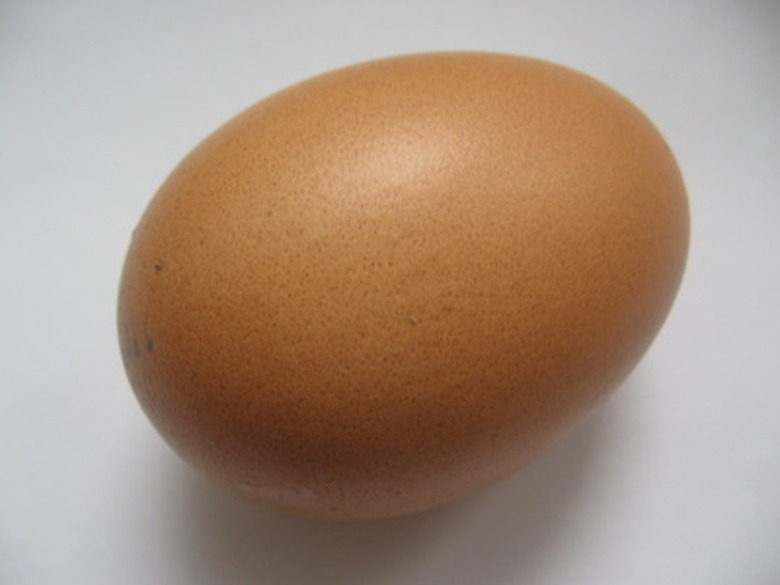Egg Flotation Science Project Procedures
The density of water has a known value; however, the density of solutions changes according to the concentration. Salt water is denser than fresh water. In the egg flotation experiment, the buoyancy of the egg increases as salt is added to fresh water, illustrating changes in density.
Materials
Materials
Use uncooked eggs in their shells that have been removed from the refrigerator so that they reach room temperature. Fill a pitcher of room-temperature water and prepare the following supplies: measuring cup, plastic or wooden stirrer, clear bowl or beaker, teaspoon, salt, ruler and small food scale.
Documentation
Documentation
Prepare a log of your observations and measurements by listing your materials. As you continue through the experiment, write down what you did, the material and amount used and your observations of the effects. Take measurements to document the distance of change. Include in your first entry the weight of the egg at the start of the experiment.
Procedure
Procedure
Fill a beaker with 1 cup of water and carefully place one egg in the water. Observe whether the egg floats or sinks (it should sink). In your log, note the location of the egg at the bottom of the beaker as "0" because it is at the starting point of the experiment.
Measure 1 tsp. of salt and dispense this into the beaker of water. Gently stir the salt to dissolve and wait for the water and egg to settle. Observe whether the egg rises. Record this step in the log, along with any observations. Continue to add salt in 1-tsp. increments until the egg begins to float from the bottom. Measure the distance the egg is floating from the bottom, and record this change. Continue gently adding salt to the beaker in 1-tsp. increments until the egg floats on the surface of the water.
Add the total number of teaspoons of salt needed to displace the egg in the water (which is the amount of salt added until the egg moves off the bottom). Similarly, calculate the amount of salt needed to completely float the egg. Compare the final amount of salt needed by placing a measuring cup on the scale and setting the scale to zero. Fill the measuring cup with the same amount of salt in your final calculation. Compare the weight of the salt needed to the weight of the egg at the start of the experiment.
According to ScienceHound.com, an amount of salt weighing the same as the egg mixed in 200 ml (6.75 oz.) will cause the egg to float. Since a cup is approx. 237 ml, adding an amount of salt weighing slightly more than the fresh egg will cause the egg to float. Your experiment log details how increasing concentration (adding more salt) has a direct effect in increasing density, causing the egg to float.
Cite This Article
MLA
Edwards, Regina. "Egg Flotation Science Project Procedures" sciencing.com, https://www.sciencing.com/egg-flotation-science-project-procedures-5692384/. 24 April 2017.
APA
Edwards, Regina. (2017, April 24). Egg Flotation Science Project Procedures. sciencing.com. Retrieved from https://www.sciencing.com/egg-flotation-science-project-procedures-5692384/
Chicago
Edwards, Regina. Egg Flotation Science Project Procedures last modified August 30, 2022. https://www.sciencing.com/egg-flotation-science-project-procedures-5692384/
